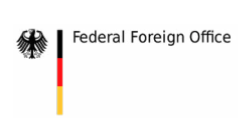WEA-Obs
Illicit hub mapping
This illicit hub mapping initiative is a flagship product of the Global Initiative Against Transnational Organized Crime’s latest regional observatory, the Observatory of Illicit Economies in West Africa. The exercise was designed with two distinct phases.
The first maps illicit flows through a particular country and identifies key hotspots, transit points and zones of criminality, particularly in conflict areas/areas where illicit flows feed into conflict dynamics, in the West Africa region.
The second phase of the project entails further analysis of each illicit hub, and its relationship with regional stability. In order to identify the illicit hubs that are most important in terms of their knock-on effect on conflict and stability across West Africa, a quantitative metric has been developed: the Illicit Economies & Instability Monitor (IEIM), which provides a score out of 30 for each illicit hub. The monitor comprises three components: violence and instability, crime-conflict links, and accelerators. The IEIM enables the identification of areas where illicit markets play the most important role as vectors of instability and conflict in the region, empowering policymakers to prioritize specific areas for targeted action.

Organized crime and instability dynamics: mapping illicit hubs in West Africa
In addition to the interactive map, the GI-TOC has published an accompanying report providing further analysis and depth to the findings.
Methodology
The development of the illicit hub mapping initiative has been a multi-stage process, with research carried out between July 2021 and March 2022. The GI-TOC research team has leveraged a combination of extensive literature review, existing institutional expertise, remote interviews with regional and national stakeholders, together with fieldwork and in-person interviews across the region. Virtual and in person verification processes, through round tables and bilateral engagements, have been coordinated to validate the results of the mapping exercise. Furthermore, the development and application of the Illicit Economies & Instability Monitor (IEIM) was also an iterative process, involving an extensive literature review, a specialist technical reference group, in-country research and data collection, expert assessment, sub-regional consultations and a final regional expert verification meeting.
The countries falling within the scope of the project are: Benin, Burkina Faso, Cape Verde, Cameroon, Central African Republic, Chad, Côte d’Ivoire, Gambia, Ghana, Guinea, Guinea-Bissau, Liberia, Mali, Niger, Nigeria, Senegal, Sierra Leone and Togo.
To read more about the development of the illicit hub mapping, please read our report and see our methodology note.


